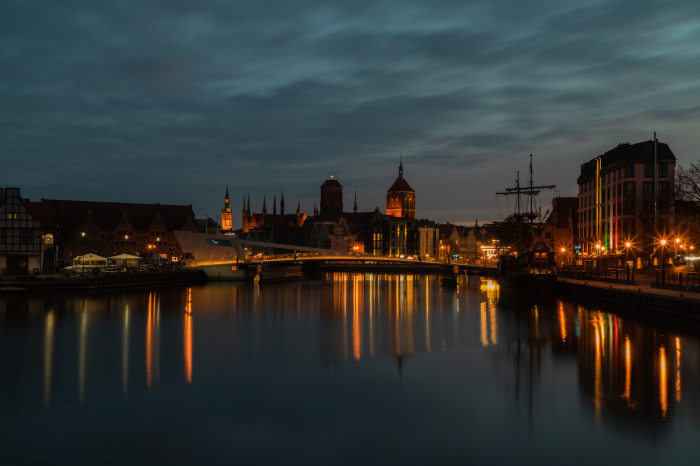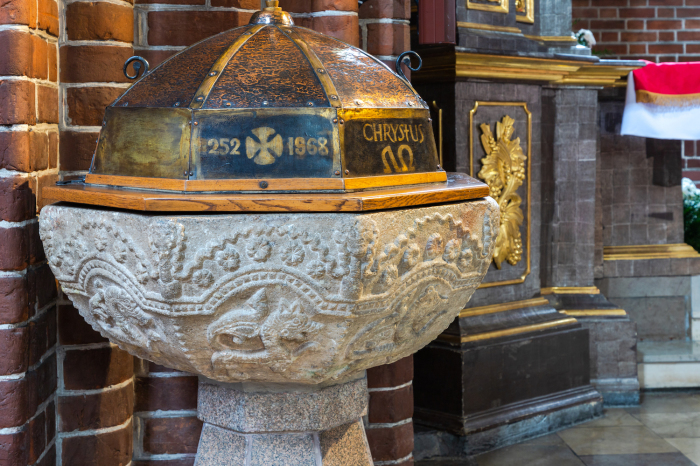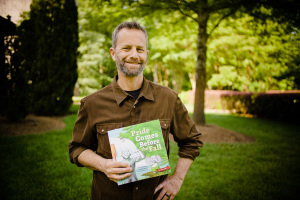In Poland, old churches offer lessons in medieval history

More than a thousand years of Christianity means there are plenty of things to discover in Poland.
Poland is an obviously old nation. However, the country in its current incarnation is still relatively young and only dates to the collapse of the Berlin Wall in 1989. That’s because much of the land within the current borders was for centuries controlled by assorted powers, including czarist Russia and Prussia before German unification to the World War II occupation under the Nazis and finally the communism of the Soviet Union.
Throughout all those periods one thing remained constant: a deep religiosity, dating to when Poland became a Christian nation with the so-called Baptism of Poland on Holy Saturday in 966.
One of the more interesting chapters in Polish history is the period of the Teutonic knights.
Officially called the Teutonic Order, the knights were part of a monastic order within the pre-Reformation Roman Catholic church that originated during the Crusades. Eventually, they settled near the Baltic in what was historically known as Pomerania. It was here where from 1226 until 1561 they controlled a monastic state equivalent to the Knights Hospitaller on the island of Malta.
The warrior-monks of the Teutonic era were also intertwined with the Hanseatic League.
The league or Hansa was a Germanic confederation that essentially functioned as a medieval free trade zone for merchants and mariners. At its peak, some 200 cities and towns were members.
The Teutonic knights and Hansa had a tremendous influence across northern Europe, including the area in and around Poland’s Baltic coast. Their respective power and wealth allowed for the construction of architecturally and artistically significant churches that remain in use today.
This defining legacy is a specific style of Gothic architecture called brick Gothic.
While stone dominated the churches, cathedrals, palaces, fortresses and vernacular architecture elsewhere in medieval Europe, brick was the everyday building material here. The reason? The area around the Baltic coast lacks sufficient natural stone resources.

To discover this period of history, I started my visit to Poland in Gdansk or Danzig, its historic German name.
The old town — called Glowne Miasto in Polish or Main City in English — looks exactly how most Americans imagine a centuries-old city somewhere in Europe. However, appearances can be deceiving.
Much of the Main City is actually a replica of what stood before the war as Gdansk sustained extensive damage. Thankfully, the cityscape was thoughtfully restored even if some of the rebuilt facades are just that: facades concealing postwar concrete buildings. That’s really quite remarkable, given the bad architecture that came out of the postwar years, particularly in the countries under Soviet occupation.
St. Mary’s Church (formally the Basilica of the Assumption of the Blessed Virgin Mary) is one of the finest examples of brick Gothic anywhere in northern Europe. Restored to the rites of Roman Catholic worship after the war, the church had been under Lutheran control since the aftermath of the Reformation. The complicated past is reflected in the interior, which has a mix of whitewashed walls and several notable examples of pre-Reformation art within chapels that line the side aisles of the nave.

About 100 miles south of Gdansk is Torun (Thorn in German).
Granted a charter by the Teutonic knights in 1233, the city was historically orientated toward the Vistula River — Poland’s longest river. Unlike Gdansk, it was spared from the bombing and destruction of the war. As a result, a considerable number of landmarks from the Teutonic and Hansa eras remain and today are protected by a UNESCO World Heritage designation.
Among the most significant sights are three period churches: the Cathedral Basilica of St. John the Baptist and St. John the Evangelist; the absolutely massive Church of the Assumption of the Blessed Virgin Mary, a former Franciscan church that includes the tomb of Swedish Princess Anna Vasa; and the Church of St. James the Greater with its imposing tower. Another must-visit is the Old Town Hall at the medieval market square. Today it houses a branch of the regional museum that includes a collection of religious art.

Two slightly off-the-beaten-path places on the drive back to Gdansk are Chelmno (Kulm in German) and Grudziadz (Graudenz in German).
Chelmno is a small town that punches above its weight.
The 743-year-old brick Gothic parish church — also dedicated to the assumption of Mary — not only has a tower that can be climbed by visitors for sweeping views of the surrounding countryside but contains a relic from the skull of St. Valentine. As one might expect, the relics attract pilgrims and are played up every Valentine’s Day.

While Grudziadz was heavily scarred by World War II, my guide said the Swedish occupation in the mid-17th century was actually much worse.
The city, which dates to the late 13th century when there was a Teutonic castle here, has a new museum within old granary buildings on the history of this once-important port on the Vistula between Torun and Gdansk. Besides the museum, the Church of St. Nicholas, which was restored after the war, has an ancient Romanesque stone baptismal font from Gotland, an island in the Baltic in present-day Sweden.
If you go
I flew into Gdansk’s Lech Walesa Airport, which is reachable with just one connection from just about every major airport in the United States.
Renting a car with GPS navigation is advisable if venturing beyond Gdansk. However, some visitors might have an issue picking up their reserved car. That’s because many rental car agencies enforce an outdated Polish law requiring some foreign drivers to hold an archaic document known as an international driver’s permit — a document that isn’t issued by the U.S. government. The permits are really nothing more than a revenue stream for the AAA, which issues them.
Stay at the Holiday Inn City Centre or Puro Hotel Stare Miasto in Gdansk, Hotel Eter in Torun and the Ibis Styles in Grudziadz. All the hotels are within walking distance of everything to do and see in their respective cities. For those with an early morning flight home, the Hampton by Hilton at Gdansk’s airport is recommended.
A detailed guide to the most notable examples of brick Gothic architecture is available through the European Route of Brick Gothic, an alliance of several historic cities and towns in Denmark, Germany and Poland.
The renowned Renaissance astronomer Nicolaus Copernicus, whose groundbreaking theory that the Earth revolved around the sun was later banned by the Roman Catholic church, was born in Torun in 1473. A brick Gothic house attributed to the family and believed to be his birthplace houses an interesting museum.
Full trip planning resources are available through the Polish National Tourist Office.
Dennis Lennox writes a travel column for The Christian Post.
Dennis Lennox writes about travel, politics and religious affairs. He has been published in the Financial Times, Independent, The Detroit News, Toronto Sun and other publications. Follow @dennislennox on Twitter.





























